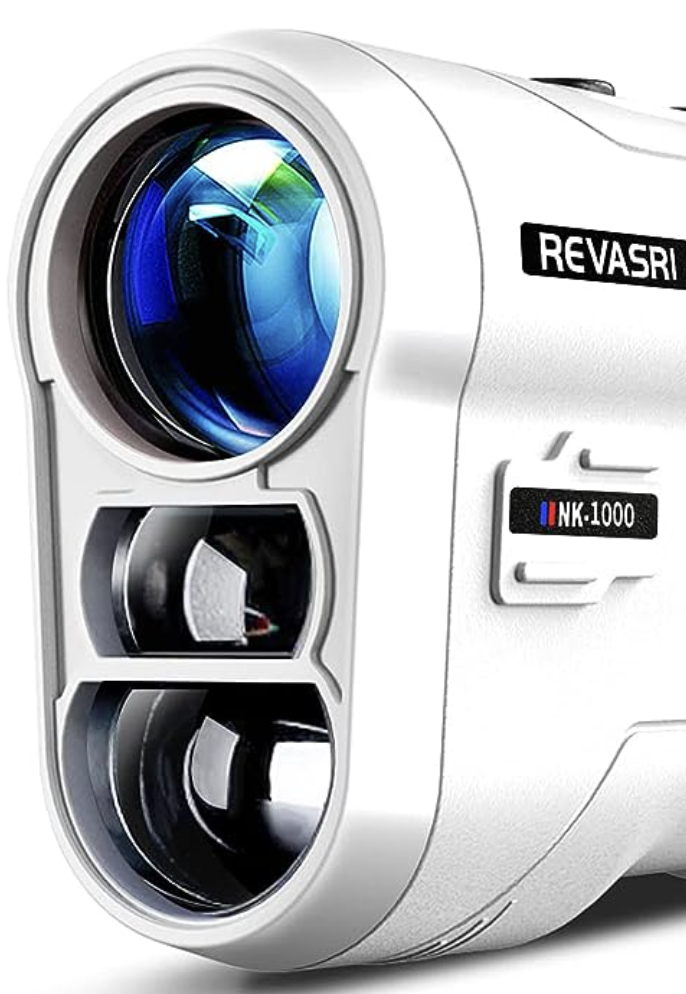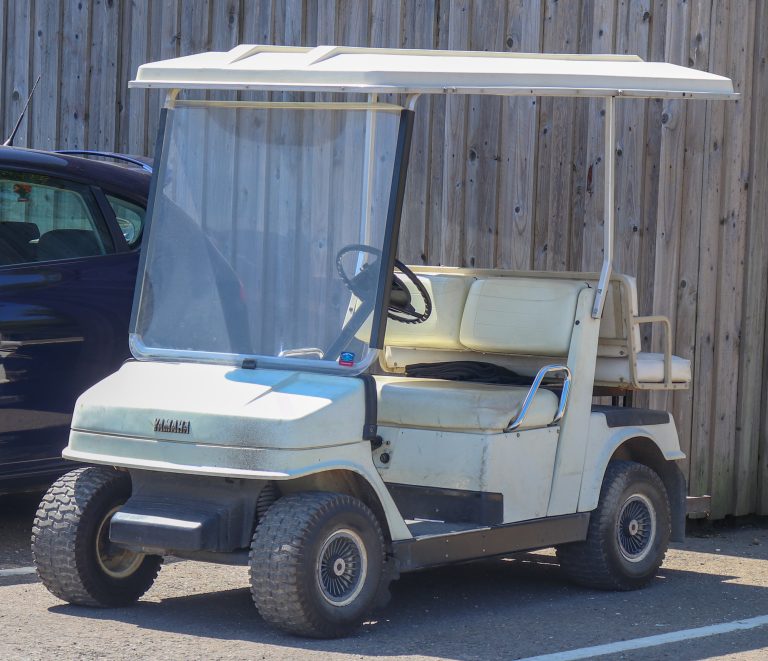Best Golf Cart Heater: 4 Heaters To Keep You Warm In Your Golf Cart
If you love driving your golf cart no matter the weather, then having a golf cart heater makes those frosty days a little more comfortable. It’s an easy-to-install accessory and models are available for every budget and preference.
Let’s review the basics of golf cart heaters and break down the pros and cons of four top models.
Propane Heater for Golf Cart
[amazon box=”B011TRLWH2″]
This 3,500 BTU propane-powered model looks less refined than the competition, but has the best features without paying for bells and whistles.
They include:
- Matchless electronic starting system
- Heat reflectors to increase output
- A stand for using it outside the cart
Noticeable issues include a lack of windscreen and a cup holder that may not be as universal as described, but users report getting an impressive eight hours out of each canister of fuel.
[amazon box=”B07HDWFMMG”]
This 4,000 BTU portable propane heater comes is a budget-friendly option that is sold alone or as apart of bundle that includes an adapter allowing you to refill the 1 lb. propane tanks it uses from an economical 20 lb. cylinder. This is one of the most popular golf cart cup holder heater styles on the market.
It fits in most standard cup holders and also includes:
- A sturdy handle for portability
- Porcelain-coated reflectors that focus heat output
- Heavy-duty safety guard to prevent direct contact with skin
- Flame-free integrated sparking mechanism
- Wind screen to keep the heat in the passenger cabin in breezy conditions
Features worth a special mention include a safety switch that turns the heater off if it’s accidentally knocked over and an oxygen depletion sensor that turns it off if cabin oxygen is low. Mr. Heater only certifies this model for outdoor use.
Complaints about this heater are rare, but include not it fitting into cup holders and fuel use that’s higher than other brands, however, at 4000 BTU, it’s a strong unit.
Expect about five hours of use per fueling.
[amazon box=”B001CFRF7I”]
Chances are you already have one Coleman outdoor product in your home, but here’s another good choice. It’s small at 1500 BTU, but runs up to 14 hours on a single canister of propane.

of Callaway ERC Triple
Track Golf Balls for
yourself or your buddy!
Features Include:
- Convenient Carrying Handle
- Detachable base stabilizes the heater and allows flexible use
- Eyelet hols for optionally securing the heater to the cart
- Industry-leading five-year warranty. It lacks a device that senses oxygen level, but Coleman states that this product is safe for enclosed recreational use and can be operated in an enclosed golf cart.
There is no adapter available to allow propane refills from a large tank as of yet.
[amazon box=”B00A0VZEKK”]
Good things come in small packages with this Heater Craft cart heater. It’s 4,500 BTU of reliable heat that requires no separate fuel to operate. Just mount it the cart and it uses a small amount of the battery’s charge to keep you warm.
Advantages include:
- Uses no fossil fuels
- High heat output is suitable for cold climates
- Ultra-compact
Disadvantages include a single heat setting and a tough installation. Heater Craft bills this heater as “ready for customer install,” but a few of them beg to differ. It’s doable, but requires a few tools and at least a hint of technical know-how.

and apparel.
gear, accessories and apparel. (affiliate link)
Golf Cart Electric Heater
[amazon box=”B073T1HG3W”]
The Climate Caddy in a Cup by Cleveland Golf is an electric heater that fits in a cup hold like propane styles. No complicated installation is required — it draws power from the cart’s battery via two alligator clips.
Advantages Include:
- Functions both as a heater and fan
- Bi-level louvered vents for directing air where you need it
- Durable high-impact, UV-protected plastic construction
- Carrying case included
This unit is safe to use with a cover and like all electric heaters, it’s emission-free and requires no fuel.
The biggest drawback is its heat output.
At about 1100 BTU, it’s not enough to heat a cart cabin on an icy day, but it also offers the prospect of gentle heat over other models that have a high output that isn’t adjustable.
This is perfect for warm climates where a little extra comfort is needed on chilly mornings and rainy afternoons.
Golf Cart Heater Basics
Golf cart heaters come in two popular styles:
- Propane
- Electric
Both come in a range of sizes and produce proportionally similar heat, but each has unique benefits.
Propane golf cart heaters are the least expensive and simplest to use. They’re compact, lightweight, require no permanent installation and are designed to fit in your cart’s cup holder. They can used be used with a cart cover as long as there’s ample ventilation and some come with stands that allow you to use them in other places.
That’s why if you add a golf cart enclosure to keep the heat in, make sure you have at least one flap open so you can ventilate while using the propane heater.
[amazon box=”B016YLUXLE”]
The drawback to propane heaters is the ongoing cost of buying fuel. Most models use the typical pound canisters that power camp stoves and each will last about between five and eight hours.
At three to five dollars each, they’re not horribly priced, but if you use your golf cart a lot in the winter, it adds up quickly.
Electric golf cart heaters are usually permanently mounted to the dashboard or steering column and run on power from the cart’s battery. A few are generic, but some are proprietary and may not fit all brands and sizes of carts.
They won’t keep you any warmer than propane heaters, but they have a few advantages. The most obvious is that there’s no fuel to buy. You’ll pay more for an electric heater, but when the cost of propane is factored in, the lifetime cost of ownership is lower.
As opposed to propane heaters, more electric models are equipped with adjustable temperature controls. It may be as simple as high and low, but that makes it more flexible in climates where the temperature fluctuates.
Other than the installation, the primary drawback of electric heaters is that they use battery power. If your battery is strong, that’s not an issue, but if it’s toward the end of its lifespan, you’ll need to replace it soon or you might get stuck out somewhere.
How do I choose the right size heater?
Heat output for both types of heaters varies from 1500 to 6,000 BTU. How much heat does that provide?
It depends.
Most makers provide broad an estimate of the temperature increase you can expect, but it varies on a number of conditions including the outdoor temperature, the temperature setting if more than one is available, and if you use the heater with or without a cover.
Covered carts with a mid-size heater can expect an increase of up to twenty degrees in average conditions, and that goes up as the temperature setting is dialed up.
The use of a cover is considered safe with both types of heaters as long as there is adequate ventilation. Since the cover is normally shifted to get in and out allowing fresh air into the cabin, it’s unlikely you’ll run into a problem, but ventilation also equals heat loss and on the coldest courses, a higher output model is recommended.
Here’s a run-down of five models to get you started.
Buying and Tips
- Read product details and specification carefully to be sure you understand what you’re getting.
- Remember that not all propane heaters offer the same number of BTU despite being similar in size, and not all electric models fit all carts.•
- If you need accessories, call the maker first to ensure they’re available.
- For installation worries on electric models, call the company or visit their website. Better makers provide technical support over the phone and may even include installation videos on their site.
- Read the manual when your heater arrives and always follow the manufacturer’s safety recommendations.
- Consider buying a well-known brand that provides a solid warranty and real-time customer support.
- Make sure your battery is in tip-top shape before installing an electric heater. Most users report less than a quarter of battery capacity is drained in a day, but sudden cold and unexpected detours affect performance and could leave you stranded.
- When you’re ready to make a buying decision, do your homework and choose a golf cart heater that will meet your needs in the worst conditions you might encounter on the course.
- Make sure you have all the accessories you need and buy the best model you can afford. Investing in your comfort on the golf course is always a good spend!






